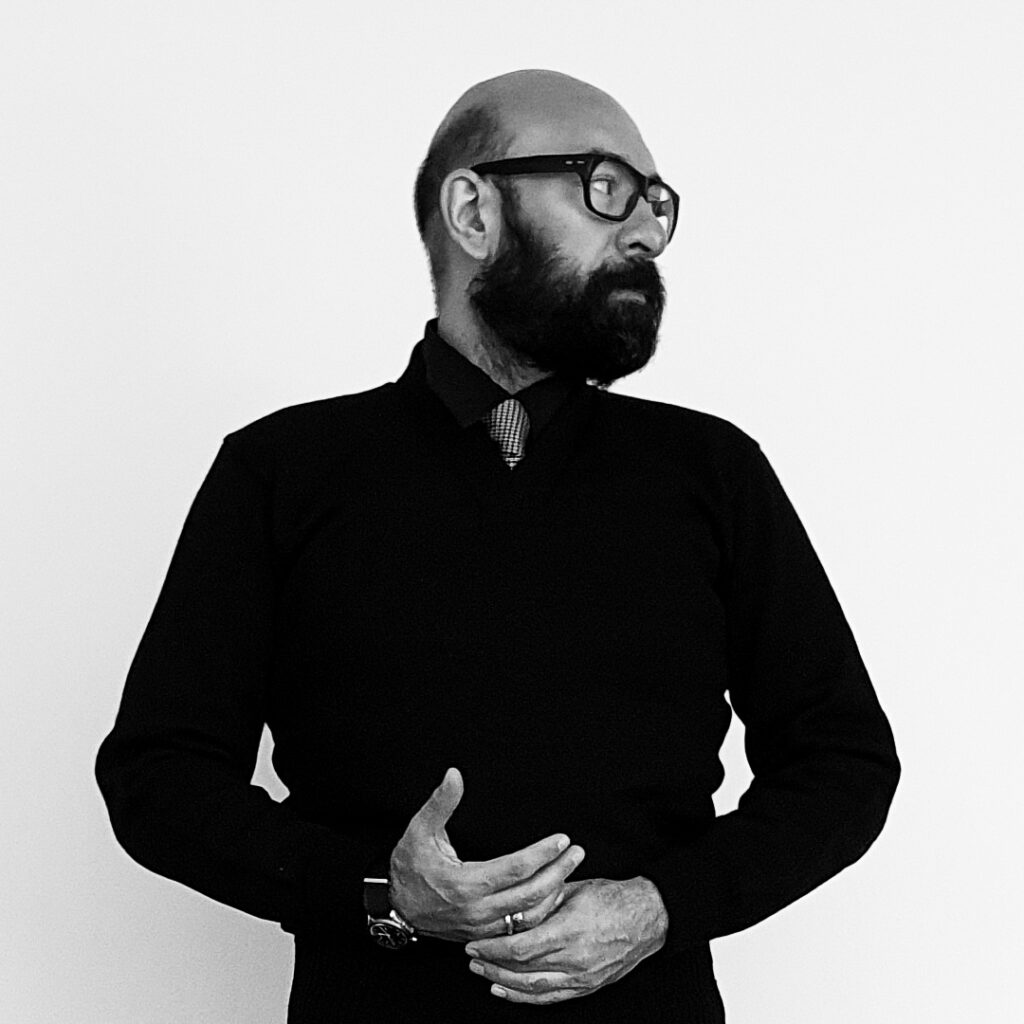Előadás
május 25. (szombat) 15:00 – 17:15
Építészet és digitalizáció: Hogyan passzol a képbe a Mesterséges Intelligencia?
Architecture and Digitalism: Where does Artificial Intelligence fit into the equation?
Az előadás angol nyelvű / Presentation in English
Kijelenthetjük, hogy szoftverek használata nélkül nem megyünk messzire, ha építészeti tervezésről van szó. A hatóságok, a megbízó, a kollégák és a szakágak is egyaránt megkívánják a számítógépes tervfeldolgozást. De mi áll a számítógépes tervfeldolgozás mögött?
Mi az a tudományos fejlődéspálya, amely befolyással van az építészetre is? Miből merítkezik a tervezés tudományosításának tendenciája? Hogyan fejlődik korunk digitális logikája, ahol a szoftver már nem egy eszköz, hanem a terv részévé válik az algoritmus?
Az Építészfesztivál digitális szekciójában három nézőpontból ismerhetjük meg az építészet és a mesterséges intelligencia kapcsolatát: akadémiai/elméleti megközelítés; fejlesztői szempont; a gyakorló építész perszónája.
At this point we won’t get far without using software when it comes to architectural design. Legal authorities, the client and even colleagues, subcontractors require computerized design processing. But what is beyond the design processing?
What is the path of scientific development that has an influence on architecture? What is the origin of design scientificization? How is the digital logic of our age developing, where the software is not a tool but the algorithm becomes part of the design?
In the Digital section of the Építész Fesztivál we can get to know the relationship of Architecture and Artificial Intelligence from three perspectives: scientific approach; developer’s aspect; the persona of the practicing architect.
Előadók és beszélgetőpartnerek / Speakers

Matias del Campo is a registered architect, designer, educator, and director of the AR2IL Laboratory – the Laboratory for Architecture and Artificial Intelligence at the University of Michigan. Founded together with Sandra Manninger in Vienna in 2003, SPAN is a globally acting practice best known for their application of contemporary technologies in architectural production. Their award-winning architectural designs are informed by advanced geometry, computational methodologies, and philosophical inquiry. This frame of considerations is described by SPAN as a design ecology. Most recently Matias del Campo was awarded the Accelerate@CERN fellowship, the AIA Studio Prize, and was elected to the boards of directors of ACADIA. SPAN’s work is in the permanent collection of the FRAC, the MAK in Vienna, the Benetton Collection, and the Albertina. He is an Associate Professor at Taubman College for Architecture and Urban Planning, University of Michigan.

Ömer Nuray is an architectural master student, content creator, and founder of Design Input Studio. Through his studio, he creates content aimed at integrating new technologies such as AI into architecture and the design process. His interest in computational design and automation led him to the world of Artificial Intelligence.
As an AI Architect at Rendair AI, he is involved in developing an AI-powered architecture visualization solution. This technology aims to make high-quality visualizations more accessible for architects.
Ömer shares his expertise and journey through his online presence, reaching and inspiring architects and designers worldwide. He provides guidance on computational design, automation, and integrating AI through platforms such as his YouTube channel and social media.

Ákos Pfemeter joined Graphisoft in 1999, which, without exaggeration, has turned from Hungary’s first „ancestral” garage company, startup, into a truly global company with Hungarian roots present in more than 100 countries around the world. Founded in 1982, Graphisoft developed Archicad, the industry’s leading building information modeling software solution for architecture and design. Archicad revolutionized architectural design when it was released for the new Apple Macintosh. Already in 1984, the developers thought beyond the simple digitization of the drawing board: their vision was realized in the form of a strong product portfolio. GRAPHISOFT’s virtual building concept was a milestone in the development of CAD and placed it at the forefront of the architecture, engineering and construction industry under a new name: Building Information Modeling, or simply BIM. From 2007, as a global marketing manager, Ákos Pfemeter was responsible for the company’s communication area first, and later, with the expansion of his responsibilities, for the product strategy and global customer relations. In his current position, he is responsible for building Graphisoft’s broader ecosystem and developing technology partnerships.
Moderátor: Bognár Melinda építész, BME Építőművészeti Doktori Iskola DLA-hallgató
Támogató / Sponsor:

